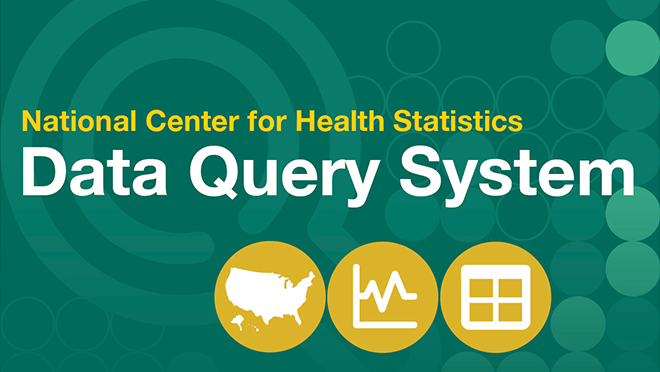At a glance
- The National Center for Health Statistics Data Query System features estimates of angina, coronary heart disease, and heart attacks.
- The system also includes estimates of cholesterol and blood pressure.
- Estimates are based on data from the National Health Interview Survey and the National Health and Nutrition Examination Survey.

Angina/angina pectoris
Angina, or angina pectoris, (angina/angina pectoris) is chest pain or discomfort that happens when the heart is not getting enough blood. It is a symptom of coronary heart disease.
Angina/angina pectoris
Get statistics from the NCHS Data Query System.
Sources
The National Health Interview Survey provides DQS with self-reported data about this topic from household interviews.
Cholesterol
Blood cholesterol is a waxy, fat-like substance made by the liver. High cholesterol happens when too much of this substance builds up on artery walls, causing them to narrow.
Cholesterol, measured, more detail
Get statistics from the NCHS Data Query System.
Sources
Health, United States (HUS) publishes data from the National Health and Nutrition Examination Survey (NHANES), which are measured with laboratory testing.
NHANES defines high cholesterol as serum total cholesterol greater than or equal to 240 mg/dL. NHANES defines hypercholesterolemia as measured serum total cholesterol greater than or equal to 240 mg/dL or reporting taking cholesterol-lowering medications.
HUS analysis of these data complement survey program analysis by presenting long-term trends in American health.
High cholesterol diagnosis, self-reported
Sources
The National Health Interview Survey provides DQS with data on high cholesterol diagnosis from household interviews.
High cholesterol, total, measured
Sources
The National Health and Nutrition Examination Survey (NHANES) provides DQS with data on total high cholesterol, which are measured with laboratory testing. NHANES defines total high cholesterol as serum total cholesterol greater than or equal to 240 mg/dL.
Coronary heart disease
Coronary heart disease is a type of heart disease caused by plaque buildup in the wall of the arteries. This buildup limits the supply of blood, oxygen, and nutrients to the heart.
Coronary heart disease
Get statistics from the NCHS Data Query System.
Sources
The National Health Interview Survey (NHIS) provides DQS with data about this topic from household interviews.
Heart attack/myocardial infarction
Heart attack, or myocardial infarction, (heart attack/myocardial infarction) happens when a part of the heart muscle doesn't get enough blood. Coronary heart disease is the main cause of heart attacks.
Heart attack/myocardial infarction
Get statistics from the NCHS Data Query System.
Sources
The National Health Interview Survey provides DQS with data about this topic from household interviews.
Hypertension
Blood pressure is the pressure of blood pushing against the walls of the arteries. Hypertension, also called high blood pressure, happens when blood pressure is higher than normal.
Hypertension diagnosis, self-reported
Sources
The National Health Interview Survey (NHIS) provides DQS with data on hypertension diagnosis from household interviews.
Preliminary Data
DQS includes final data from NHIS. More recent preliminary data for this topic are available through the NHIS Early Release Program.
Hypertension, measured
Sources
The National Health and Nutrition Examination Survey (NHANES) provides DQS with data on hypertension, which are measured during physical examination. NHANES defines hypertension as having—
- systolic blood pressure greater than or equal to 130 mmHg,
- diastolic blood pressure greater than or equal to 80 mmHg, or
- currently taking medication to lower high blood pressure.
Hypertension, measured, more detail
Sources
Health, United States (HUS) publishes data from the National Health and Nutrition Examination Survey (NHANES), which are measured during physical examination. NHANES defines hypertension as having—
- systolic blood pressure greater than or equal to 130 mmHg,
- diastolic blood pressure greater than or equal to 80 mmHg, or
- currently taking medication to lower high blood pressure.
HUS analysis of these data complement survey program analysis by presenting long-term trends in American health.
